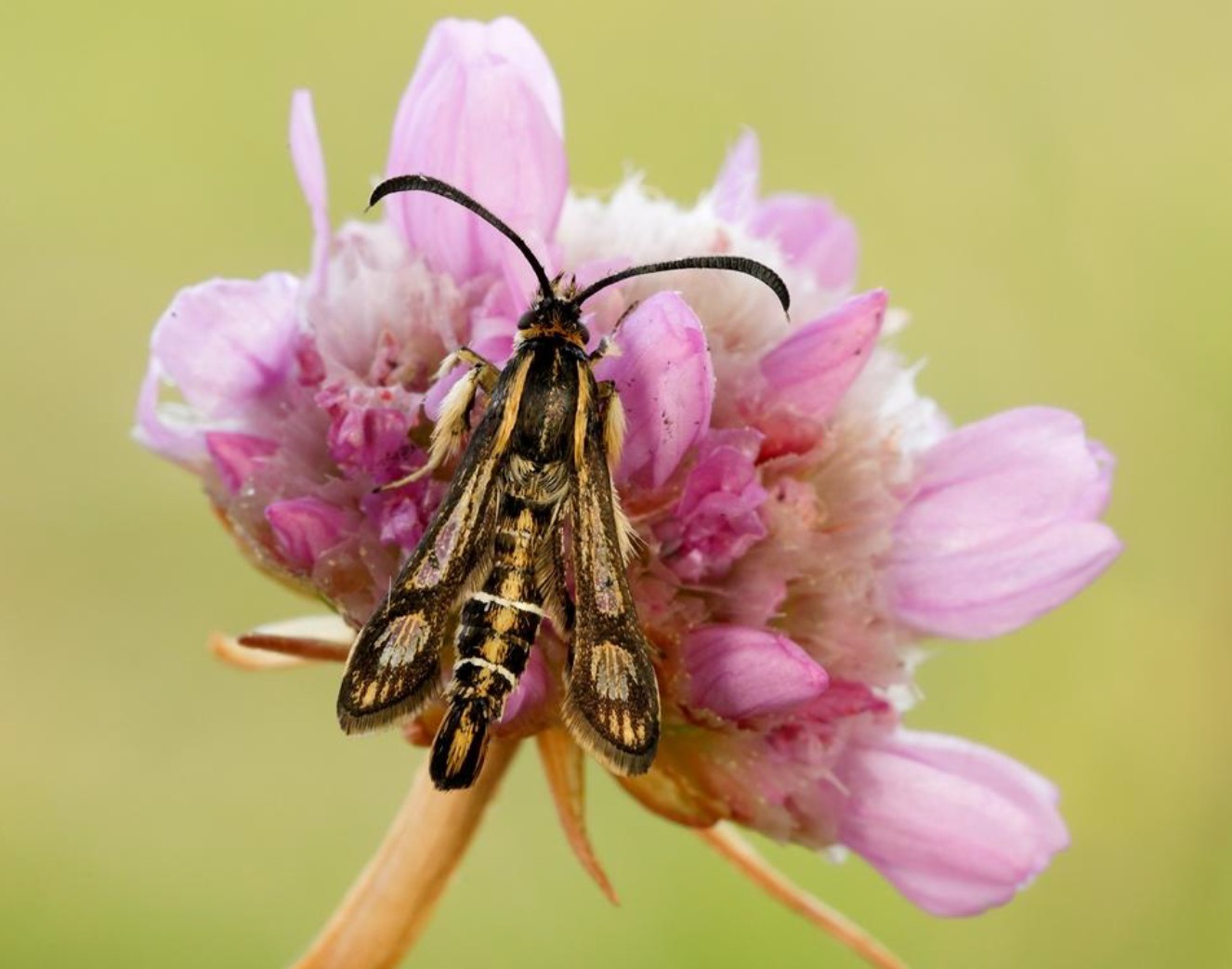This is yet another new addition to the moth fauna of D&G. On the 19th July this year Peter Norman found this small moth in a light trap while trapping at Ross Bay south of Borgue. Although only a centimetre long this moth stood out amongst many other species because of its shape and the very distinct, dark curved marks at the base of its wings. It belongs to the very small family Nolidae of which only the Least Black Arches is known in Scotland although recently the Green Silver-lines and the Oak Nycteoline have been moved into this family. Characteristically the moths in the sub-family Nolinae have raised tufts of scales on the forewings although these are not obvious on this photograph and do get worn off with flight.
The fully grown caterpillar is up to 15mm long and is dark grey with a white dorsal line and tufts of bristles on each segment reminiscent of a tiny Small Tortoiseshell caterpillar. The eggs are laid in July on Blackthorn, Hawthorn or apple and the hatching caterpillars overwinter in crevices in the tree bark. When they reach full size the following year they construct a very tough boat-shaped cocoon on the bark. A month later the moths emerge and are readily attracted to light.
The Short-cloaked moth is common throughout England and Wales and although its abundance has been decreasing substantially, its distribution is increasing. This moth is found in Cumbria and from this record it seems to have crossed the border into Scotland with this being the first verified Scottish record. There have been a couple of previous records but neither was backed up by a photograph or specimen. With such widely available foodplants it may be that this spread north could be another consequence of global warming?



